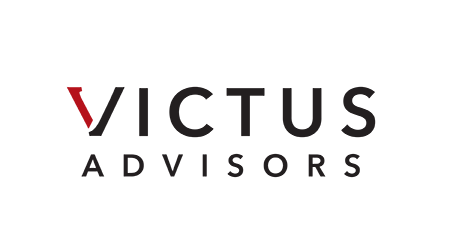From the outside, a new stadium, event center, sports complex or theater can look like a single sweeping decision. The same is true for the venue-anchored, mixed-use districts that now drive the economic models for so many of our projects. In reality, these projects are the result of years of planning, negotiation and analysis. At Victus Advisors, our role is to guide that process, so every step supports the client’s long-term goals.
Starting with clarity
The first step is defining what success will look like. Before anyone talks about grandstands, turf layouts or naming rights, we work with stakeholders to set clear priorities. That definition varies from project to project.
For a youth sports complex, success might mean attracting regional and national tournaments, driving sports tourism, creating a year-round hub for local athletes and families, or a blend of all three. For a stadium or performing arts venue, it might center on economic impact, fan experience and event diversity. In every case, these goals provide the lens for every decision that follows.
Clarity early on saves time and resources later. It keeps scope, budget and design in alignment and gives decision-makers a benchmark for evaluating trade-offs. It also ensures that when the project is complete, success can be measured against the objectives that mattered most from the start.
Building on a foundation of facts
Once the vision is set, our next task is to test its viability. We start with market demand analysis to determine whether the project is positioned to attract enough users, visitors and events to meet its goals. That includes studying demographics, travel patterns, event market dynamics, and the competitive venue landscape locally and regionally.
For sports tourism projects, we model how different tournament types and age groups might fill weekends throughout the year. For a performing arts center, we analyze the mix of touring shows, community performances and rentals needed to meet operational targets. For a stadium, we would evaluate ticket demand, premium seating potential and sponsorship capacity.
Financial modeling is another key component. We look at operating revenue and expenses under multiple scenarios to understand how the facility will perform under favorable and less-than-favorable conditions. We also evaluate potential funding sources, from municipal bonds to public-private partnerships to corporate naming rights and everything in between.
This stage is where the data often reveals both opportunities and risks. A sports complex might have stronger-than-expected demand for shoulder-season tournaments, or a stadium plan might need to scale back premium seating inventory to match the market. Identifying these realities early allows for smart adjustments before major commitments are made.
Collaboration across stakeholders
Complex venue projects often involve a broad set of partners and collaborators: public agencies, private investors, operators, architects, event promoters, and community representatives. Each has a unique set of priorities, and those priorities don’t always align naturally.
We see our role as a connector and translator. We facilitate conversations so that stakeholders understand one another’s objectives and constraints. For example, a city might prioritize long-term economic impact through visitor events, while a private operator might prefer to focus on profitable local programming the first few years. By surfacing these perspectives early, we can help design a plan that balances both.
With sports complexes, collaboration can be especially intricate. Sports governing bodies, local clubs, hotels, tourism bureaus, and community groups all play a role in shaping the programming and operational model. Bringing these voices together is essential for creating a facility that serves both the visitor economy and the local community.
From plan to execution
Once the analysis is complete and the plan is agreed upon, the focus shifts to making the project come to life. Next steps can include advising on deal structures, conducting sponsorship valuations, reviewing operational considerations and facilitating procurement of design-build-operate teams. The aim is to ensure that the strategic vision carries forward into contracts, facility design and construction, and day-to-day operations.
For a stadium, that might mean finalizing a naming rights deal that captures the market value we identified during the study. For a youth sports complex, it might involve structuring partnerships with tournament rights holders or designing field layouts that maximize flexibility. For a performing arts venue, it could mean ensuring the stage, back-of-house and technical capabilities align with the types of shows needed to meet revenue goals.
Lessons from the field
Across 50-plus studies in recent years, a few themes consistently emerge:
- Alignment matters – When all stakeholders agree on goals from the outset, projects move faster and encounter fewer costly redesigns.
- Flexibility wins – Facilities that can adapt to different event types or user groups are better equipped to weather changes in demand.
- Sports tourism is a year-round opportunity – Well-designed sports and recreation complexes can fill calendars outside of peak tourism seasons, boosting local hotels and restaurants during slower visitation months.
- Community integration strengthens support – Projects that offer tangible benefits to local residents, in addition to visitors, tend to earn stronger political and public backing.
These lessons apply across venue types, but they are especially relevant in sports tourism and multi-use entertainment districts, where competition among destinations is growing and visitor expectations are rising.
Seeing the whole picture
Every complex venue project is a puzzle with its own shape and scale. Most project organizers recognize the obvious needs: market demand, design, financing; yet sometimes the less visible elements are just as critical: community buy-in, public-private partnerships, long-term sustainability.
At Victus Advisors, our approach is built to see the whole picture. We assemble the right pieces in the right order, and we guide clients from the first conversation to a facility that delivers on its promise — whether it’s a professional stadium or arena, a youth sports complex, a live performance venue, or a mixed-use entertainment district that incorporates diverse real estate elements into a seamlessly integrated destination.
By combining market insight, financial and economic expertise, and a deep understanding of how people experience places, we help our clients create projects that not only meet operational and economic goals but also become vibrant hubs of activity for their communities.

